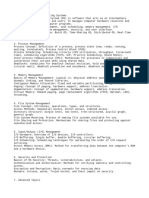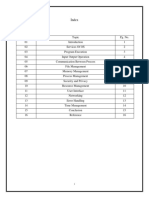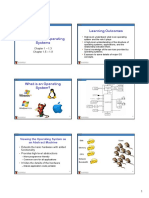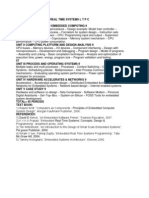0% found this document useful (0 votes)
225 views2 pagesOperating Systems Class Notes
An operating system (OS) is a vital software component that manages computer hardware and software resources and provides common services to computer programs. The OS acts as an intermediary between the user and computer hardware, managing resources like memory, processing, file storage, and devices. It also provides functions like process management, memory management, file system management, device management, and security controls.
Uploaded by
scribd.kkflaCopyright
© © All Rights Reserved
We take content rights seriously. If you suspect this is your content, claim it here.
Available Formats
Download as PDF, TXT or read online on Scribd
0% found this document useful (0 votes)
225 views2 pagesOperating Systems Class Notes
An operating system (OS) is a vital software component that manages computer hardware and software resources and provides common services to computer programs. The OS acts as an intermediary between the user and computer hardware, managing resources like memory, processing, file storage, and devices. It also provides functions like process management, memory management, file system management, device management, and security controls.
Uploaded by
scribd.kkflaCopyright
© © All Rights Reserved
We take content rights seriously. If you suspect this is your content, claim it here.
Available Formats
Download as PDF, TXT or read online on Scribd
/ 2
















































































